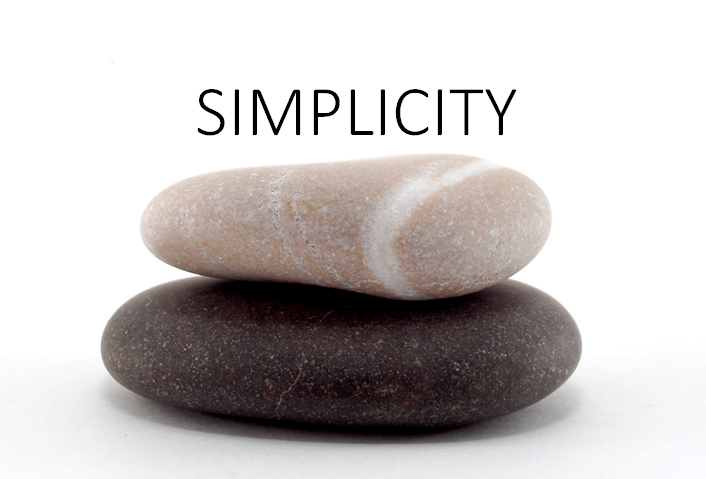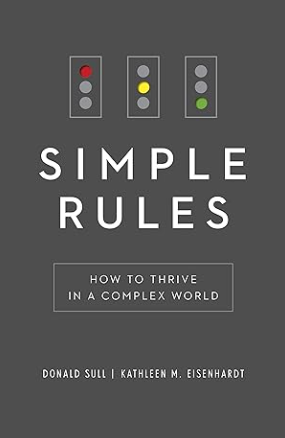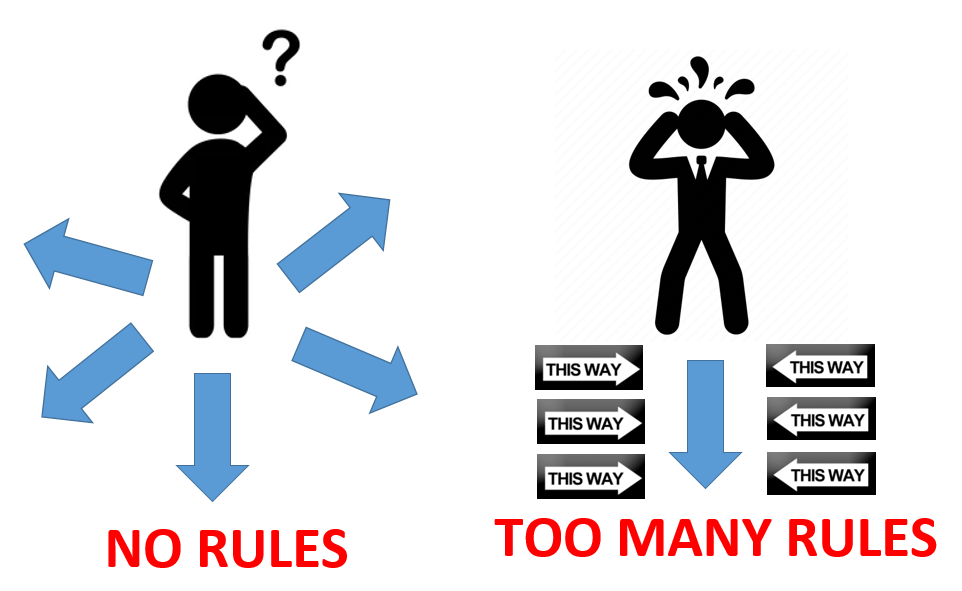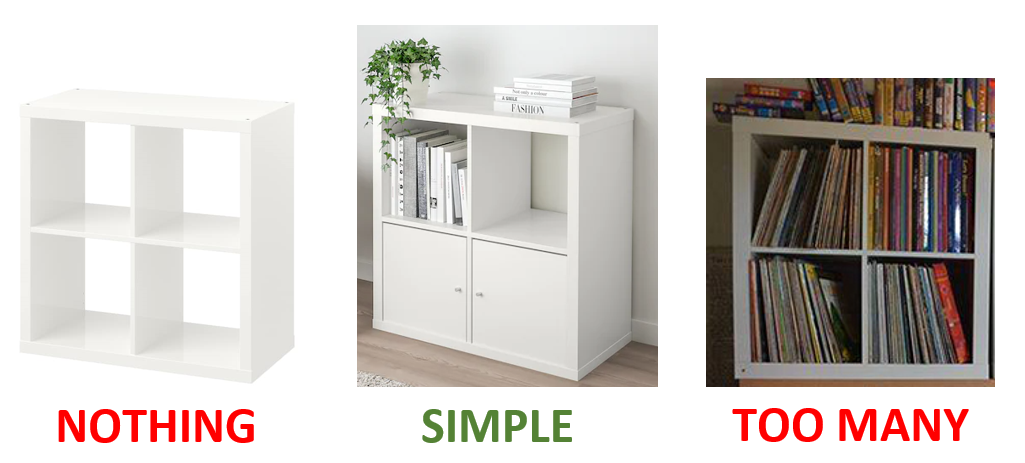Simplicity is the ultimate sophistication: The use of simple rules for successful research
Actually, to be successful in our research or jobs or other activities, we just need to follow and commit to few simple rules.

Actually, to be successful in our research or jobs or other activities, we just need to follow and commit to a few simple rules.
There are two famous quotes that show the great benefit of simplicity.
Albert Einstein said that “everything should be simple but not simpler”
Leonardo Da Vinci said “simplicity is the ultimate sophistication”
This post is inspired by the book “Simple Rules: How to Thrive in a Complex World” by Prof. Kathleen Eisenhardt (Professor of Management Science and Engineering at Stanford University).
Rules are different with tips. Tips are a set of good practices or guides for doing certain activities, such as tips for research and for effective work. Tips are general and can be picked and chosen according to our desirability. Hence, tips are suggestions that can be followed or not.
Meanwhile, a rule is a set of regulations or principles that govern someone to follow the regulation in specific situations. Rules need to be followed!
So, why do we need to discuss simple rules where a lot of tips are available?
Well, rules are specific depending on which person or situation they want to be applied and followed.
Let us discuss this simple rule!

No rule at all or too many rules for research are bad
Regarding rules, there are two extreme situations when applying rules:
- No rule at all
- Too many rules to follow
The first extreme situation is when there is no rule at all to follow. In this situation, people can do everything according to their thoughts or ideas without any boundaries or limits.
This innovation or idea without limits causes a person to be not focused and creates chaos in activities. Hence, specific main research goals will not be achieved. Because our limited energy is used in many directions and runs out before achieving even a single goal.
The second extreme situation is when there are too many rules that govern research activities. If someone, as a researcher, has to follow too many rules to do innovative research, then these too many rules will stress and strict the researcher.
Hence, the researcher becomes not creative and cannot produce a good idea and research since the research environment is too restricted or stiff.
The best idea is to select the middle way, which is using rules that are simple!

What is the simple rule?
So, how we define or know that rules are simple instead of complicated is by understanding the definition of simple rules.
According to Prof. Kathleen, there are four criteria that define simple rules:
1. Simple rules are simple
Simple rules should only have a handful of rules, that are three to five (maybe a bit more), rules and not more. By keeping the rules small, we can easily remember and commit to the rules.
In many situations, very often, problems are mostly caused by only a few important factors instead of by many possible factors. It is like the Pareto rule that 80% of outcomes come from only 20% of causes (the most important causes).
2. Simple rules are tailored to a specific situation or person
There are no simple rules that can solve a problem in every situation or for every person.
Every situation and person are unique and the simple rules for each situation and person will be likely to be different.
Simple rules for effective work will be different between an engineer and a medical doctor. Because engineers and doctors completely have different behaviour and work requirements.
To understand the specificity of simple rules, we can imagine simple rules as a knife. We can use a knife to cut, for example, a carrot. But, we cannot use the knife to open a bolt. The knife is designed to be specific for cutting vegetables and other similar things.
3. Simple rules are applied to a single well-defined activity or task
Simple rules are very effective when they are applied to a well-defined critical activity that represents a bottle-neck to achieving results.
So, we first need to find the bottleneck or the root cause of our problem and define the bottleneck clearly. Then, we can design simple rules to solve the bottleneck.
For example, when we know that our research problem is due to a lack of important literature reviews that cause the lack of ideas. We can define simple rules to solve this problem as, for example: (1) read at least two papers a week, (2) the papers should be highly cited with citations more than 100, (3) write down the main idea of the papers and (4) find the research gap.
The simple rules in the example, just mentioned above, do not limit what journals to read from or what authors to select from. Hence, we can develop or own creativity in searching what papers to read.
4. Simple rules give concrete and practical guidance
Simple rules should be concrete but also leave room for creativity, improvement (innovation) and flexibility.
For example, in the simple rules previously mentioned above in simple rule #3, we said at least two papers a week. Meaning, that we have time, we can even read three or four or more papers a week. Also, when we say highly cited papers, we can interpret papers that are significant to the field or authored by famous researchers in the field.
The main idea is that the rules should be directly understandable, but leave room for improvement and innovation.
Simple rules for research
Let's discuss some examples of how to apply simple rules previously explained above.
Research activities are very unpredictable and high-risk. We need to find ways where there are no ways before. The activities require a wide “exploration” to find pieces of the puzzle and assemble them to have a bird-view picture of a problem.
Each field of research has its characteristics and uniqueness. Methods or approaches that are effective in a certain field cannot necessarily be implemented in another field.
If not well navigated, research activities can turn into a chaotic situation where we cannot find research gaps and, hence, cannot produce good scientific results.
There are so many options to choose from when carrying out research, for example, what paper to read, what equation to use, what material to select, what machine to use to make a part and the list goes on and on.
This situation is like when we have too many alternatives. For example, when we have so many job offers with various remuneration packages or research position offers in different cities with different living costs and salaries, these situations have so many alternatives that we cannot carefully consider each option and can cause a chaotic and confusing situation to us.
This chaotic situation will cause us to not be able to make a good decision. If we have a lot of checklists to consider before making a decision, most likely we will not go through all the checklists because the consideration will take too long.
Rather, we can, for example, impose simple rules.
For job selection, we can have rules: (1) the salary should be reasonably higher than the current job, (2) the field suits our passion and (3) the office can still be commuted from our home.
For research position selection, (1) the topic suits our research interest, (2) the university should be in a midsize city (for a reasonable cost of living) and (3) the position should be at least two years.
With these examples of simple rules, we can easily select all the alternatives and hopefully make a good decision. Note that people tend to remember short or few things.
Some examples of simple rules for research
- Prof. Hinton (the founding father of deep learning), said that there are new papers published every day about deep learning. Hence, to do research in deep learning, we do not need to read hundreds, if not thousands, of papers about deep learning. What we need to do are (1) read a handful of relevant papers (maybe 20-30 or a little bit more depending on the topics), (2) spot relevant gaps that are not explained or understood in the papers and (3) perform research on the topics that are still as knowledge gaps.
- Researchers in big research consultancy organisations said that to be able to meet the deadlines of many projects, researchers or consultants do not need to make a detailed and complex work schedule that dictates what to do every hour a day. Rather, their main rules are to (1) create main deadlines (big goals), (2) divide the goals into a handful of smaller goals and (3) push to meet the deadline of the smaller goals. All small work will be “automatically” adjusted to follow the process to reach the goals.
- A collection of simple rules for research from various noble laureates are as follows: (1) do research that is your passion, (2) do not too much worry about constraints (for example fund, laboratory and building), (3) have confidence in your ability, (4) do not follow obvious trends or do not enter crowded fields, find your own research niches, (5) work in a small laboratory or group or institute where you have more voices and contributions and (6) have a good mentor (who can motivate and inspire you to do research).
Stopping rule
It is much easier to start an activity than to stop the activity.
Hence, sometimes we need to make a stopping rule to limit our activity or to find other ways that are more effective than old ways.
Let us use again the example of the simple rules to find ideas by reading papers (see the simple rule #3 above). The rules said that we need to read at least two excellent or important papers per week.
However, we cannot do the paper reading forever as we need to carry out our own research activity as well.
So, we need to have simple rules for stopping.
For example in this case, we can set simple rules to stop reading papers such as (1) ignored papers that are more than 10 years old, (2) maximum paper reading duration is three months and (3) stop when we have found a good idea to perform research.
Why does simplicity work?
In science, we try to model real-world physical phenomena. The model will be used to predict the phenomena in the near or far future.
There will be many possible models to represent a physical phenomenon. However, there is one principle, the simplest good model is most likely the best predictor for the future. This good simple model is the meaning of Einstein’s quote previously mentioned above: “Everything should be simple but not simpler”.

If we see the illustration above with three bookshelves. One bookshelf on the left is totally empty. The bookshelf in the middle has just enough books and a plant. Finally, the right shelf has too many books and is very crowded.
From the three types of bookshelves above, we can agree that the middle one, that is the simple one, appeals to us the most. The middle shelf has just used spaces and some enough unused spaces. We can easily identify what and where books are on the bookshelves.
Why does it work?
According to Prof. Kathleen’s book, simple rules work because:
- Simple rules allow some flexibility that can capture new opportunities while putting some limits or boundaries to prevent chaotic situations
- Simple rules can produce better decisions compared to other more sophisticated rules or models for a wide variety of situations where causes and effects are poorly understood, data are limited and time is critical
- Simple rules promote collective behavior where many people are involved in actions to achieve a common goal and easy-to-understand common rules are needed to coordinate the people
Simple rules tend to be remembered and followed!
Simple rules capture opportunities
Simple rules are very effective for situations where flexibility is more important than consistency, the situation is very dynamic and the benefit of pursuing or exploring more opportunities is far better than the cost of making mistakes.
Consider a case study of McDonalds. Everybody knows McDonald's from young men to old men. The chain of McDonald's is recognised around the world with so many branches around the world.
The fast-growing branches of McDonald's are based on three simple rules: (1) low-price fast food, (2) predictable foods and (3) consistent experiences across all McDonald's branches around the world.
The beauty of simple rules is that they impose constraints or some sort of structure (while avoiding rigidity to have room for improvement and exploration) to dynamic and hard-to-predict situations with limited information.
Simple rules produce better decisions
Simple rules are able to make better decisions very fast with reasonable accuracy. Simple rules focus on the key factors or the root cause of problems and do not need to “stop” to consider many details or factors that are not so important to the problems.
Simple rules are a kind of rule of thumb: Short, clear and easy to remember and apply. Simple rules make people more likely to act on their decisions because the rules are easy to remember and much less complicated to follow than complex guidelines for action.
That is, we can say simple rules are practical approaches that are NOT extremely accurate in all types of situations, but are accurate for specific well-defined problems.
Simple rules avoid overfitting on historical data!
Very often, complicated rules or models are made from analysing too much historical data with little knowledge of cause-effect relations and too little knowledge at hand. Hence, the complex rule or model will overfit the historical data but is not a good future predictor.
Simple rules promote collective behaviors
Any single entity, let's say a person, in this world has a very limited capacity. A single person cannot build a 100-stair skyscrapper. This single entity can produce something that is beyond its capability when the entity cooperates together.
Simple rules can be a way to coordinate entities to work together to achieve common goals. With simple rules, a common understanding of how to or procedure can be understood by all entities.
Let us take an example from bee colonies. When we see a beehive, we think that the hive is well-designed with complex engineering calculations.
No, it is not! A bee colony and the beehive emerge from many bees that work together in a synchronised manner. The bee colony starts by searching for a place to make the colony. Of course, the place should be safe and close to food sources.
To explore a new place and build a colony, bees only follow simple rules: (1) many scout bees will explore all possible places, (2) bees will “dance longer” when finding a better site than other sites, (3) other bees just follow the “dancing bee” that has found a good place and other bees will keep exploring other possible sites.
The rules above allow scout bees to have general guidance in exploring new sites while allow them to explore unexpected opportunities. With the rules, no bees will visit the same site twice! By following the rule, all bees can make better decisions than a single bee can make.
These simple rules of bees to find a new site for building a colony have been formulated into a scientific algorithm to find the optimum solution to various kinds of optimisation problems in engineering and sciences. The algorithm is called the “artificial bee colony (ABC)” algorithm.
Conclusion
In this post, we have discussed about simple rules. Simple rules are effective when we apply them to a well-defined activity to solve the root cause or the bottleneck of a problem.
Simple rules are in the middle of two situations: no rule at all and too many rules to follow. Both situations of no rule at all and too many rules will be chaotic so that goals cannot be achieved.
Simple rules work because they can impose constraints to avoid chaotic situations while providing flexibility, they can produce better decisions and they can promote collective actions.
Effective simple rules can greatly improve our activities and solve problems, such as scientific research.
Remember, in any problems, most likely the main causes are only a handful of factors. By applying simple rules to the main causes, we can effectively solve the problem and navigate through a chaotic or problematic situation.
Finally, it is worth noting that simple rules are specific to certain situations and personal conditions and cannot be generalised to all situations.
We recommend the book of Prof. Eisenhardt about “Simple rules: How to thrive in a complex world” that inspires this post.
In addition, We also recommend books “Deep Work: Rules for Focused Success in a Distracted World” about how to do work that give big results by Cal Newport.
